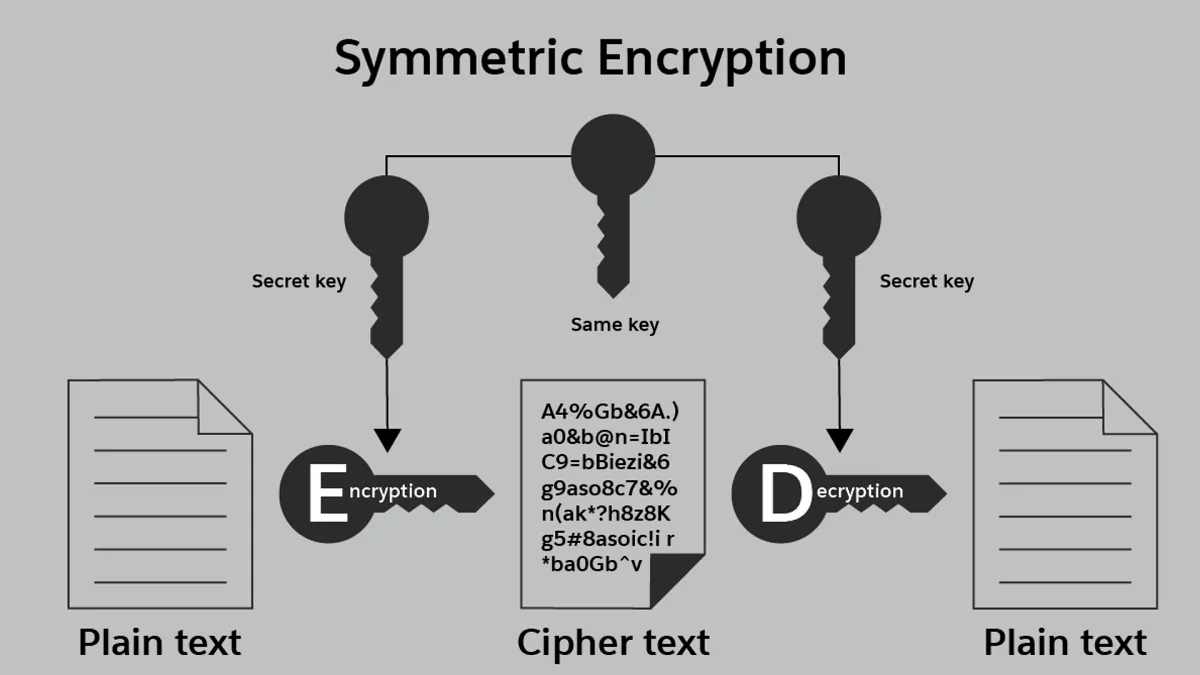When we discuss about information security, cryptography is like a secret language that protects statistics from falling into the incorrect hands. There are many one-of-a-kind approaches to do this, and one of the important techniques used in block ciphers is called Ciphertext Feedback, also acknowledged as CFB mode.
If you’re new to the world of cryptography, do not worry. We’re gonna take this step by using step so with the aid of the quit of this guide, you’ll have a strong appreciation of what ciphertext feedback mode in cryptography is all about, how it works, why it’s used, and the place it matches in the large image of records encryption.
The Basics of Block Ciphers
Before diving into ciphertext feedback, it’s necessary to apprehend what a block cipher is.
A block cipher is a type of encryption the place a fixed-length group of bits (called a block) is converted into another block of bits the usage of a secret key. Think of it like a computing device that takes a field of letters and scrambles them primarily based on a unique passcode. Popular block ciphers consist of AES and DES.
The thing is, block ciphers can only deal with a precise quantity of facts at a time — like 128 bits for AES. But in actual life, information comes in all sizes and shapes. So, to encrypt longer messages, we want methods to cut up and system the data. That’s where modes of operation come in.
What is Cipher Feedback Mode in Cryptography?
Now let’s get to the main topic — cipher comments mode. This is one of the modes of operation that helps block ciphers work with facts that’s longer than one block or even data that comes in small chunks, like streaming messages.
Ciphertext feedback mode, or CFB, turns a block cipher into something that can encrypt statistics of any measurement — even a single byte at a time. That makes it awesome beneficial in situations where data would not come in giant chunks, like encrypting keystrokes or real-time facts streams.
In simple terms, CFB mode permits a block cipher to behave like a circulation cipher, which potential it can encrypt records bit by way of bit or byte by way of byte. That’s a large deal when you do not recognize the size of your statistics in enhance or when you’re working with information in actual time.
How Does Cipher Feedback Mode Work?
Alright, let’s spoil it down with an clarification of how ciphertext remarks clearly functions. We’ll use an easy-to-understand analogy and then look at a more technical breakdown.
The Analogy: Secret Messages in a Chain
Imagine you and your pal are sending secret notes back and forth. You use a secret decoder ring (the encryption key) to scramble your message. But as an alternative of scrambling the message directly, you first scramble the final message you sent, and then use that scrambled output to encrypt the new message.
So every new message is affected by way of the previous one, making it very difficult for an outsider to figure out what’s going on if they don’t understand the beginning point and the secret decoder.
The Technical Process
Here’s how the true encryption in cipher remarks mode works:
Initialization Vector (IV): This is a random beginning cost that ensures every encryption session is special even if the key is the same.
Encryption Function: The block cipher algorithm (like AES or DES) is used solely for encryption in CFB, even all through decryption. That’s one neat component about it.
Feedback Loop:
- The IV is first encrypted using the key.
- The end result is then XORed with the plaintext to produce the first ciphertext block.
- This ciphertext block is then used in vicinity of the IV for the subsequent round.
- The system repeats for every block of data.
Here’s a simplified step-by-step for encryption:
Step 1: Encrypt the IV with the cipher key.
Step 2: XOR the result with the first plaintext block to get the first ciphertext block.
Step 3: Use the ciphertext block as the input for the subsequent encryption round.
Repeat: Keep repeating this for all blocks.
And for decryption, it’s almost the same process:
- Step 1: Encrypt the IV (or preceding ciphertext block).
- Step 2: XOR the result with the ciphertext to get the plaintext.
- Step 3: Use the ciphertext block again in the subsequent round.
Since encryption is always used and not decryption, implementation becomes a bit greater streamlined, which is one of the benefits of cipher comments mode in cryptography.
Cipher Feedback Mode Example (Simple)
Let’s say we’re encrypting a message “HELLO” the usage of 1-byte CFB (just to maintain matters simple), with AES and a fixed key.
We’ll start with:
- Key: SECRET123 (we won’t dive into how the true key works here)
- IV: A random byte, let’s say 10101100
For every byte of the message, we:
- Encrypt the IV (or preceding ciphertext)
- XOR it with the plaintext byte
- Produce ciphertext
- Feed that ciphertext again for the next step
If the first persona of “HELLO” is H, we XOR it with the encrypted IV to get ciphertext1, then feed that ciphertext1 into the next spherical to encrypt E, and so on.
This chaining means that if even one bit of the ciphertext is changed, all following blocks will be flawed — which helps with information integrity too.
Why Use Cipher Feedback Mode?
Good question. Why not simply use simpler modes like ECB (Electronic Codebook)? Here’s why cipher comments mode is regularly better.
1. Encrypts Small Units of Data
Unlike modes like ECB or CBC, which require full blocks, CFB can encrypt smaller facts sizes. That skill it’s proper for real-time facts like keystrokes, voice data, or sensor streams.
2. Stream Cipher Behavior
Because it works like a stream cipher, it’s greater adaptable. You can encrypt byte-by-byte or even bit-by-bit.
3. No Need for Separate Decryption Algorithm
CFB uses the encryption characteristic even at some stage in decryption, so only one implementation of the block cipher is needed. That simplifies design in some systems.
4. Error Propagation is Limited
One corrupted byte of ciphertext influences only the current and subsequent block. That’s better than some modes where an error can spoil the complete message.
Downsides of Cipher Feedback Mode
CFB isn’t perfect. Like all modes, it has pros and cons.
- Slower than some stream ciphers: Since every block relies upon on the preceding one, you can’t parallelize the encryption or decryption.
- Initialization Vector is Crucial: If you reuse IVs or mess it up, your encryption turns into weak. IV administration is constantly vital in modes like this.
- Not Random Access: You can’t decrypt block five without decrypting blocks 1 to 4 first. This makes it much less appropriate for some purposes where you want speedy statistics access.
Comparing Cipher Feedback to Other Modes
Let’s see how cipher remarks mode in cryptography compares to other popular modes:
| Mode | Encrypts Partial Blocks? | Needs IV? | Parallelizable? | Stream-Like? |
| ECB | No | No | Yes | No |
| CBC | No | Yes | No | No |
| CFB | Yes | Yes | No | Yes |
| OFB | Yes | Yes | Yes | Yes |
| CTR | Yes | Yes | Yes | Yes |
As you can see, CFB sits in the middle. It supports streaming and small facts sizes however can not be parallelized easily.
Real World Uses of Cipher Feedback Mode
CFB mode has been used in exclusive purposes where data arrives in unpredictable or small chunks. Here are some real world examples:
- Secure Shell (SSH): SSH makes use of modes like CFB to guard interactive terminal sessions.
- ATM Networks: Some older economic structures used DES in CFB mode for secure transmission.
- Sensor Networks and IoT: Devices that ship small, constant updates benefit from CFB’s ability to encrypt small packets.
- Voice Communication Encryption: Encrypting VoIP statistics or radio transmissions the place information is transmitted in actual time.
Tips When Using Cipher Feedback Mode
If you’re planning to put in force or use CFB in your applications, maintain a few suggestions in mind:
- Always Use a Random IV: Never reuse it with the equal key. That’s an easy mistake that weakens the entire encryption.
- Use Full-Block Feedback When Possible: Even though partial comments is supported, using full blocks helps maintain matters greater secure.
- Verify Data Integrity: CFB would not supply authentication. Use it alongside message authentication codes (MAC) or authenticated encryption (like AES-GCM).
Final Thoughts
Understanding ciphertext feedback or cipher comments mode is a key step in greedy how cryptographic structures adapt block ciphers for more bendy encryption. Whether you’re a developer building secure apps, a pupil studying about information protection, or just anybody curious about how encryption works, understanding how modes like CFB function helps release the greater picture.
Cipher remarks mode in cryptography gives a neat balance between stream-like conduct and block cipher security. It’s now not the solely answer out there, however in the right use cases, it’s powerful, effective, and fairly smart once you get how it works.
To wrap it up, CFB is:
- Great for streaming and real-time data
- Flexible with records sizes
- Secure when used properly
- But no longer perfect for fast, parallel processing
There you have it — a beginner-friendly however deep seem to be into the world of cipher remarks mode. Hope this information helped you apprehend how it works and why it’s still relevant in today’s digital safety landscape.
If you’re curious, strive searching up some code examples using AES in CFB mode in Python or Java. It’ll help join the principle to something practical.
Thanks for reading!


